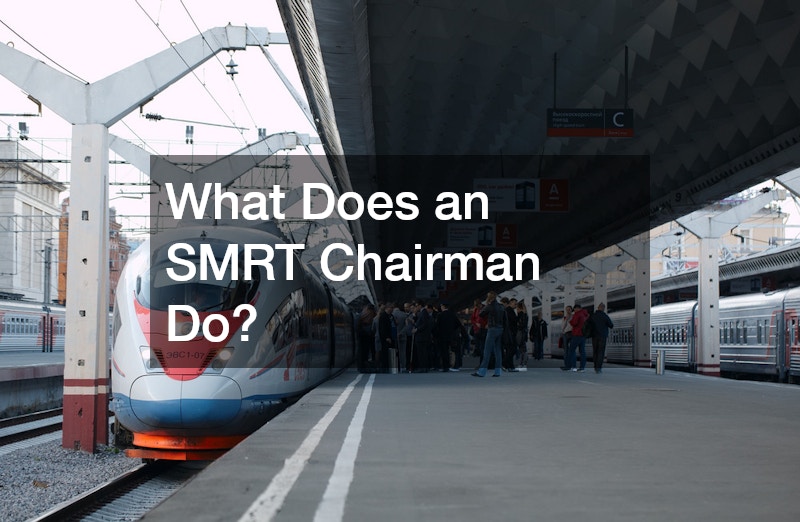What Does an SMRT Chairman Do?


The role of the SMRT CEO is crucial in steering the strategic direction and decision-making processes of SMRT Corporation, one of the major public transportation companies in Singapore. This article explores the key responsibilities and influences of the SMRT Chairman on the company’s operations and developments.
1. What Are the Core Responsibilities of an SMRT Chairman?
A. Oversight of Corporate Governance
The SMRT Chairman plays a critical role in ensuring that the company adheres to ethical standards and effective governance practices. By establishing robust internal controls and compliance measures, the Chairman fosters a culture of transparency and accountability within the organization.
Working closely with the board of directors, the Chairman guides the formation of policies that uphold corporate integrity. This includes ensuring that decisions made are in the best interest of shareholders, stakeholders, and the wider community.
Furthermore, the Chairman actively engages in periodic reviews of governance frameworks to adapt to evolving regulatory requirements. This proactive approach supports the ongoing enhancement of corporate governance structures at SMRT.
B. Setting the Strategic Vision
Collaborating with the board and executive management to outline long-term goals and strategies that align with SMRT’s mission is a key responsibility. The Chairman ensures that these strategies are coherent with SMRT’s commitment to delivering safe and reliable transportation services.
By fostering an environment of innovative thinking, the Chairman paves the way for forward-looking strategies that keep SMRT competitive in the industry. This includes evaluating emerging trends and technologies that could influence public transportation’s future landscape.
Moreover, the Chairman emphasizes the importance of aligning strategic objectives with national transportation policies and urban development plans. This ensures that SMRT’s growth contributes positively to Singapore’s overall infrastructure development.
2. How Does the SMRT Chairman Influence Operational Efficiency?
A. Policy Frameworks
The SMRT Chairman helps develop policies that enhance service quality and operational efficiency in the public transportation network. By establishing comprehensive policy frameworks, the Chairman provides a strong foundation for operational excellence.
Key areas of focus for these policies include safety standards, customer service quality, and resource optimization. The Chairman also ensures that policies are regularly reviewed and updated to stay relevant to the changing needs of commuters.
Furthermore, the Chairman advocates for the implementation of best practices and standardized procedures across the organization. This approach helps streamline operations and improve service delivery outcomes.
B. Performance Monitoring
Establishing metrics and benchmarks is essential to evaluating the performance and efficiency of services provided by SMRT. The Chairman plays a pivotal role in defining performance indicators that reflect the company’s operational goals.
Regular performance evaluations allow the Chairman to identify areas for improvement and implement necessary adjustments. This commitment to continuous improvement ensures that SMRT maintains high standards of service delivery.
Additionally, the Chairman leverages data-driven insights to inform decision-making processes and strategic planning. This focus on evidence-based strategies enhances the overall effectiveness of SMRT’s operations.
3. What Is the Role of the SMRT Chairman in Crisis Management?
A. Leading Crisis Response Initiatives
During crises, the Chairman provides leadership and guidance to ensure swift and effective responses. By coordinating with key stakeholders, the Chairman ensures that crisis management strategies align with organizational priorities.
A critical aspect of the Chairman’s role in crisis management is facilitating timely decision-making to mitigate impact. This involves activating necessary resources and communication channels to address the crisis effectively.
Moreover, the Chairman plays an active role in post-crisis evaluations to identify lessons learned and incorporate improvements in crisis preparedness plans. This proactive stance strengthens SMRT’s resilience to future challenges.
B. Communication and Public Relations
The Chairman is responsible for maintaining transparency and effective communication with stakeholders during crises. Establishing open lines of communication helps build trust and confidence in SMRT’s crisis response abilities.
Through strategic public relations initiatives, the Chairman ensures that accurate information is disseminated promptly to the public and media. This approach minimises misinformation and reassures stakeholders of SMRT’s commitment to transparency.
Additionally, the Chairman liaises with government authorities and regulators to keep them informed of SMRT’s crisis management strategies. This collaboration supports coordinated responses and regulatory compliance.
4. How Does the SMRT Chairman Contribute to Sustainability Efforts?
A. Promoting Sustainable Practices
The Chairman of SMRT advocates for environmentally friendly policies and practices in public transportation infrastructure and services. This commitment to sustainability aligns with global efforts to reduce carbon emissions and protect the environment.
By setting sustainability targets, the Chairman motivates the organization to adopt practices that conserve resources and minimize environmental impact. This includes implementing energy-efficient technologies and promoting green commuting options.
B. Investment in Green Technologies
Facilitating the adoption and integration of green technologies is a priority for the SMRT Chairman, aiming to reduce the carbon footprint of operations. This involves investing in innovative solutions that enhance energy efficiency and reduce emissions.
The Chairman works with industry partners and research institutions to explore cutting-edge technologies that support sustainable transportation. This collaboration drives advancements in eco-friendly transit systems and infrastructure.
5. How Does the SMRT Chairman Engage with Stakeholders?
A. Building Stakeholder Relationships
Maintaining robust relationships with government entities, partners, and the community is essential to support SMRT’s objectives. The Chairman plays a pivotal role in fostering these connections through regular engagements and collaborations.
The Chairman’s efforts to build strong stakeholder relationships are crucial for aligning interests and navigating industry challenges. Through effective communication and collaboration, stakeholders are kept informed and involved in SMRT’s development initiatives.
B. Ensuring Stakeholder Alignment
Aligning stakeholder interests with the company’s vision is a key focus for the SMRT Chairman. This involves incorporating stakeholder feedback into strategic decisions to ensure mutual benefits.
Regular consultations and feedback mechanisms facilitate stakeholder involvement in decision-making processes. This inclusive approach helps the Chairman align organizational goals with stakeholder expectations.
.



